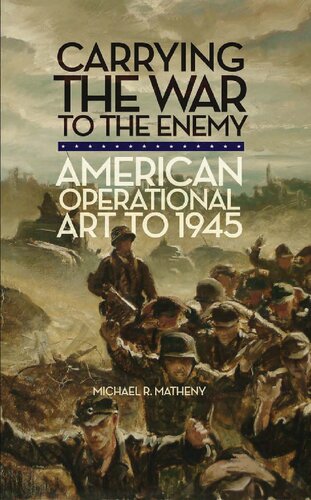

Most ebook files are in PDF format, so you can easily read them using various software such as Foxit Reader or directly on the Google Chrome browser.
Some ebook files are released by publishers in other formats such as .awz, .mobi, .epub, .fb2, etc. You may need to install specific software to read these formats on mobile/PC, such as Calibre.
Please read the tutorial at this link: https://ebookbell.com/faq
We offer FREE conversion to the popular formats you request; however, this may take some time. Therefore, right after payment, please email us, and we will try to provide the service as quickly as possible.
For some exceptional file formats or broken links (if any), please refrain from opening any disputes. Instead, email us first, and we will try to assist within a maximum of 6 hours.
EbookBell Team

4.8
44 reviewsMichael R. Matheny believes previous studies have not appreciated the evolution of U.S. military thinking at the operational level. Although they may rightly point to the U.S. Army's failure to modernize or develop a sophisticated combined arms doctrine during the interwar years, they focus too much on technology or tactical doctrine. In his revealing account, Matheny shows that it was at the operational level, particularly in mounting joint and combined operations, that senior American commanders excelled—and laid a foundation for their country's victory in World War II.
Matheny draws on archival materials from military educational institutions, planning documents, and operational records of World War II campaigns. Examining in detail the development of American operational art as land, sea, and air power matured in the twentieth century, he shows that, contrary to conventional wisdom, U.S. war colleges educated and trained commanders during the interwar years specifically for the operational art they employed in World War II.
After 1945, in the face of nuclear warfare, the American military largely abandoned operational art. But since the Vietnam War, U.S. commanders have found operational art increasingly important as they pursue modern global and expeditionary warfare requiring coordination among multiple service branches and the forces of allied countries.